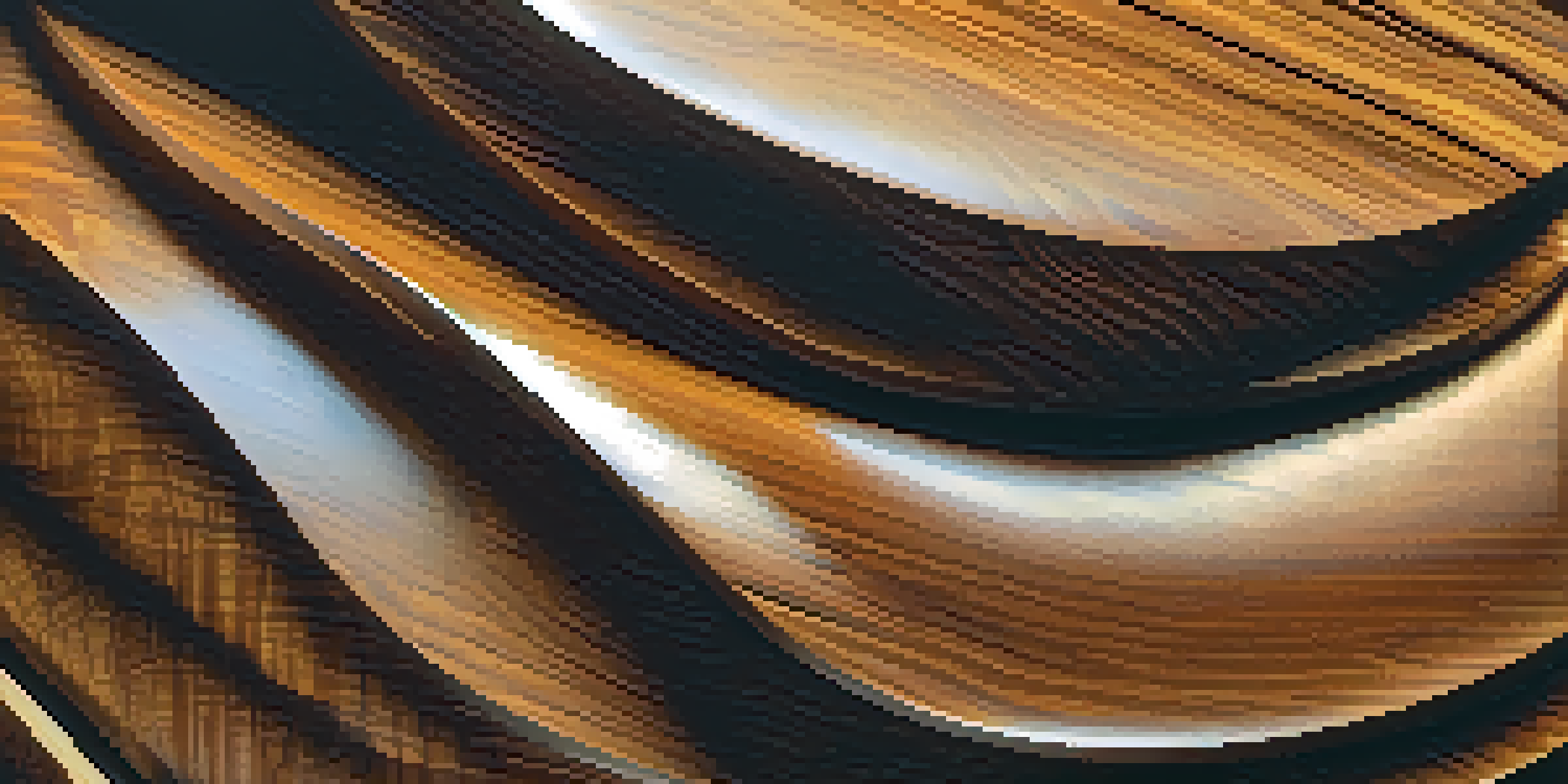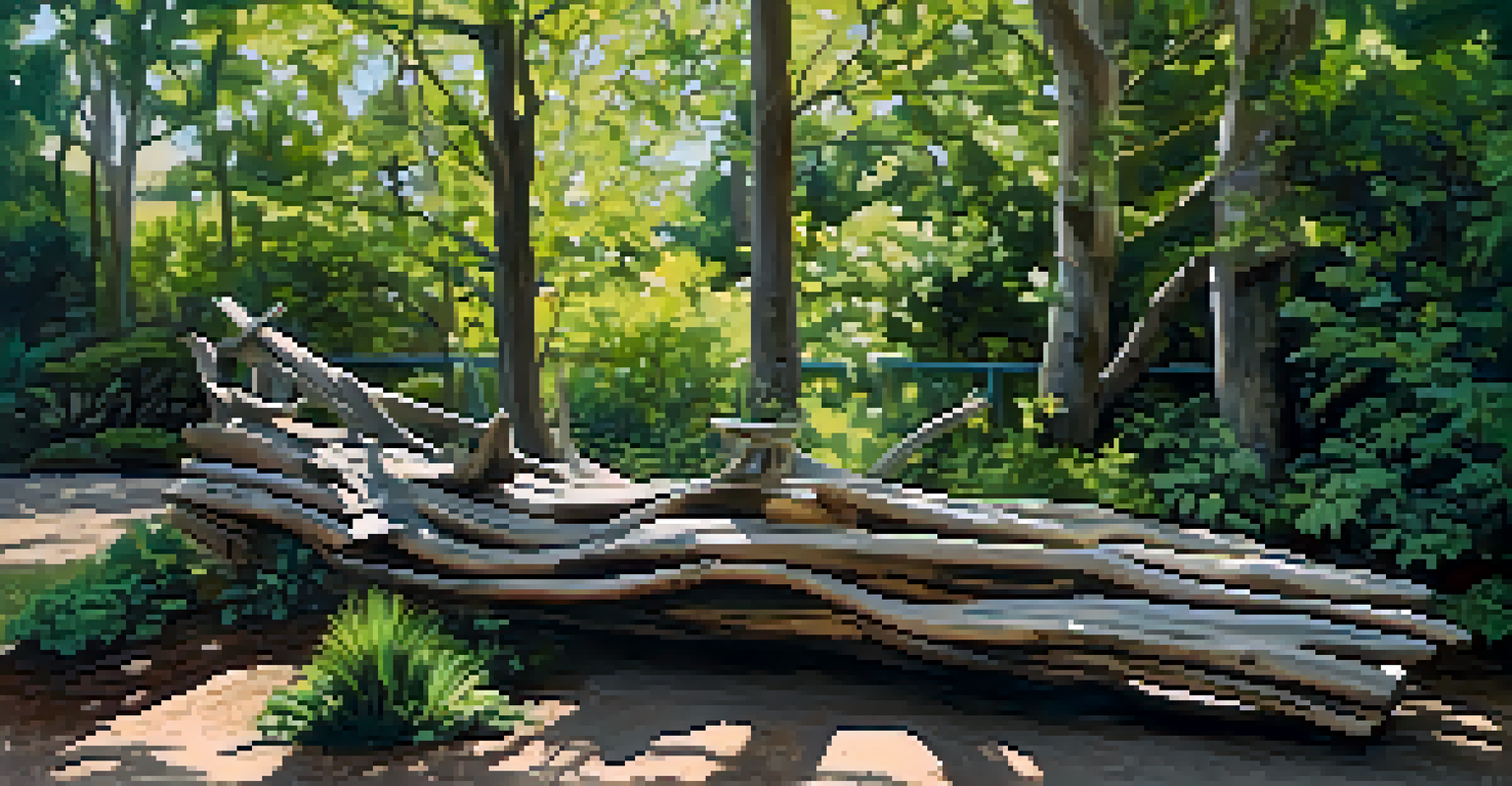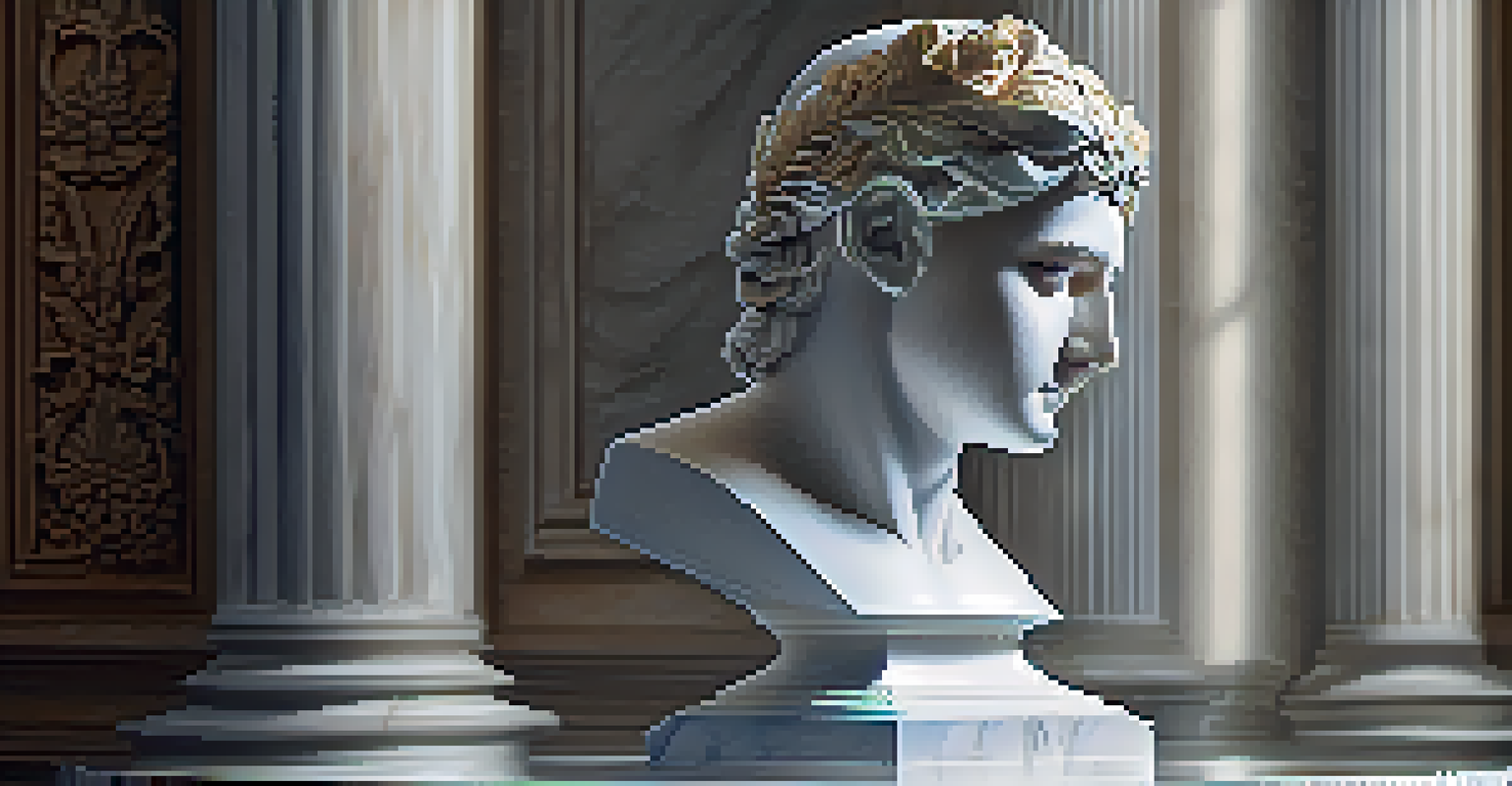Creating Texture in Sculpture: Advanced Carving Techniques

Understanding Texture: The Foundation of Sculpture
Texture is an essential element in sculpture that adds depth and interest. It influences how light interacts with the surface, giving the piece a dynamic quality. Sculptors often use texture to evoke emotions or tell a story, making it a powerful tool in their artistic arsenal.
The essence of sculpture is to create a three-dimensional illusion of texture and depth.
By manipulating texture, artists can create contrasts that draw the viewer's eye and invite them to explore the piece more closely. For instance, a smooth finish can suggest elegance, while rough surfaces may convey power or rawness. These choices are crucial to the overall impact of the sculpture.
Understanding the types of texture—tactile (how it feels) and visual (how it looks)—is vital. By mastering both, sculptors can ensure their work resonates on multiple sensory levels, enhancing the overall experience for the audience.
Choosing the Right Tools for Advanced Carving
Selecting the right tools is crucial when aiming for intricate textures in your sculpture. Different tools yield varied effects; for example, chisels create crisp lines while rasps can smooth out or add subtle texture. Having a diverse toolkit allows for greater creativity during the carving process.

Consider investing in specialized tools like power carvers or rotary tools for more detailed work. These can save time and provide precision that hand tools might not achieve. However, remember that the best results often come from a combination of both traditional and modern techniques.
Texture Adds Depth to Sculpture
Manipulating texture allows sculptors to evoke emotions and enhance the viewer's experience.
Experimentation is key. Start with a simple piece and try different tools on various materials to see how they interact. This hands-on experience will inform your future projects and help you develop a personal style of texture creation.
Material Selection: Influencing Texture Outcomes
The choice of material significantly impacts the texture of a sculpture. Soft materials like clay or wax allow for more detailed carving but may not hold intricate textures as well as harder materials like marble or stone. Each material has its own characteristics that sculptors must consider.
Art is the most beautiful of all lies; it is the truth of the human experience told through texture and form.
For instance, wood can provide a warm feel and natural grain patterns, while metals can be polished to a shiny finish or left raw for a more industrial look. Understanding these properties helps sculptors choose the right material for their intended textural effect.
Additionally, experimenting with mixed media can yield fascinating results. Combining different materials—like adding metal elements to a wood sculpture—can create unique textures that enhance the overall aesthetic and storytelling of the piece.
Techniques for Creating Depth and Dimension
Creating depth in a sculpture involves more than just layering materials; it’s about how textures interact. Techniques such as undercutting can create shadows and highlight certain areas, giving a sense of depth that draws the viewer in. This technique is especially effective in materials like stone.
Another method is to build up layers of texture. For example, applying a rough texture in the background while keeping the foreground smooth can create a striking contrast that emphasizes the main subject. This layered approach invites viewers to explore the sculpture from different angles.
Tools Impact Texture Creation
Choosing the right tools is essential for achieving intricate textures, blending traditional and modern methods.
Using techniques like carving, modeling, and assembling can all contribute to dimensionality. By mixing these methods, sculptors can enhance the tactile experience of their work, making it more engaging and visually interesting.
Incorporating Natural Elements for Organic Texture
Nature is a rich source of inspiration for textural elements in sculpture. Incorporating natural objects, like leaves or stones, can add organic texture that resonates with viewers. This approach not only beautifies the piece but also connects it to the environment.
Using natural materials, such as driftwood or stone, can bring unique textures that are difficult to replicate artificially. These elements can create a sense of authenticity and grounding, enhancing the sculpture's narrative and emotional weight.
Moreover, observing the way natural textures interact in the wild can inspire new techniques. For example, the way bark peels or how water erodes stone can spark ideas for textural variations that evoke nature's beauty in your work.
Experimentation: Pushing Boundaries in Sculpture Texture
One of the most exciting aspects of creating texture in sculpture is the opportunity for experimentation. Don’t be afraid to try unconventional materials or techniques. For example, mixing concrete with other materials can yield surprising textures that challenge traditional sculptural norms.
Incorporating found objects or recycled materials can also lead to innovative textural effects. This not only adds a layer of meaning to your work but can also make it more sustainable. The beauty of sculpture lies in its ability to evolve and adapt to new ideas and practices.
Materials Influence Textural Effects
The selection of materials significantly affects the texture and overall aesthetic of a sculpture.
Documenting your experiments through sketches or photographs can help track your progress and inspire future projects. This creative process is essential in developing a unique artistic voice that resonates with audiences.
Finishing Techniques: Enhancing Sculptural Texture
Finishing touches can dramatically enhance the texture of your sculpture. Techniques like polishing, staining, or applying patinas can change the visual quality and tactile response of the piece. A well-applied finish can make the textures pop and attract light beautifully.
Whether you're aiming for a rustic look or a sleek, modern finish, the right technique can elevate your work. For instance, a wax finish can add depth and warmth to wood, while a matte varnish can give stone a soft, understated elegance.

Consider testing different finishes on small samples before committing to a final piece. This allows you to see how various finishes interact with your chosen textures, ensuring that you achieve the desired effect.